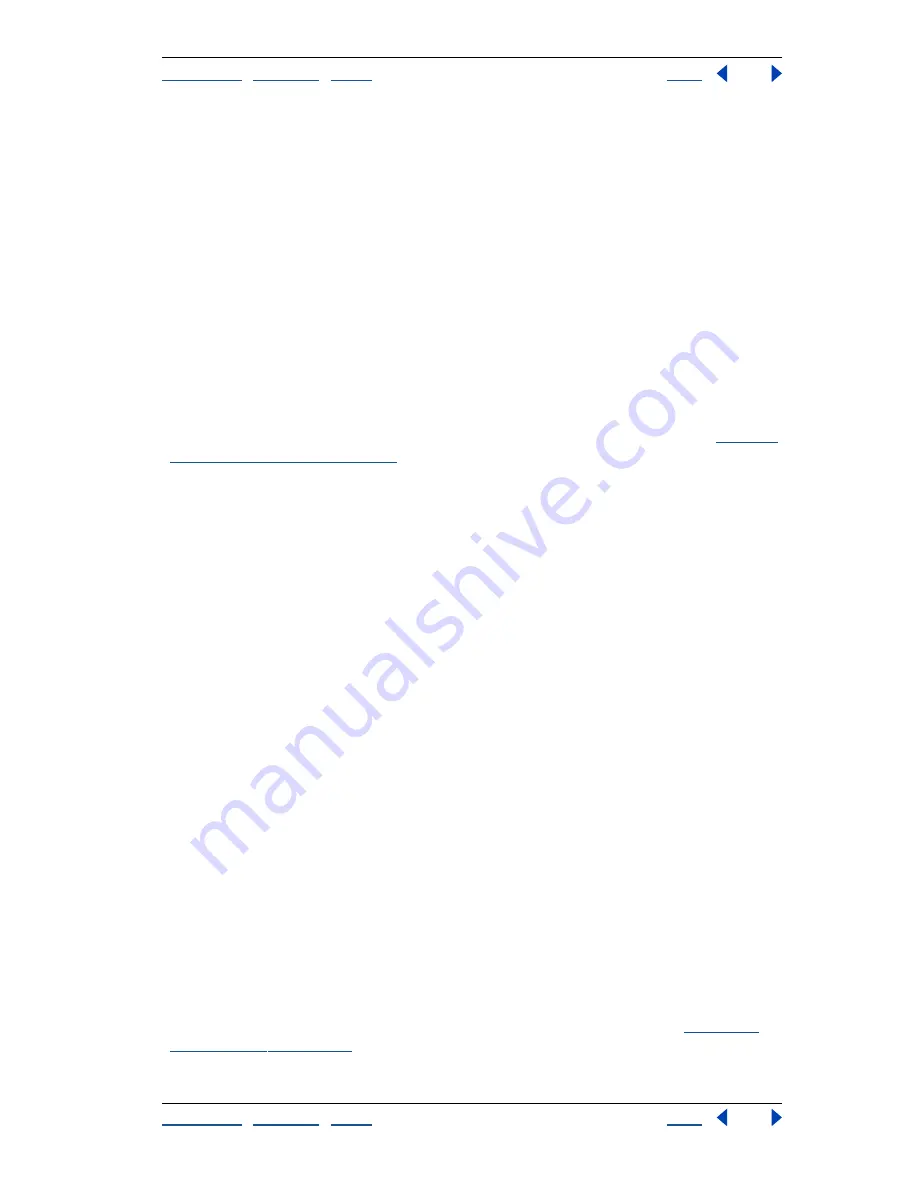
Using Help
|
Contents
|
Index
Back
30
Adobe Illustrator Help
Setting Up Artwork in Illustrator
Using Help
|
Contents
|
Index
Back
30
You can also adjust the placement of the printable area of the page to control how
artwork is printed.
Working with tiled artwork
As you work with tiled artwork, be sure to consider how the artwork relates to the bound-
aries of the page grid and to the total dimensions of the artboard. For example, if the
artwork is tiled onto six pages, part of the artwork will print on a separate sheet of paper
that corresponds to page 6. If you specify printing only from pages 1 to 5, the part of the
artwork that is on page 6 won’t print.
If you have set up the file to view and print multiple pages, the file is tiled onto pages
numbered from left to right and from top to bottom, starting with page 1. (The first page
is always page 1; there is no way to change the page 1 designation in Adobe Illustrator.)
These page numbers appear on-screen for your reference only; they do not print. The
numbers enable you to print all of the pages in the file or specify particular pages to print.
The page or set of pages is aligned with the upper left corner of the artboard by default.
However, you can reposition pages on the artboard by using the page tool. (See
“Moving
the page boundaries” on page 31
.)
To see whether the tiling format is visible on-screen:
Choose View > Show Page Tiling or View > Hide Page Tiling.
To change the page tiling options:
1
Choose File > Document Setup. Then choose Artboard from the pop-up menu at the
top left of the Document Setup dialog box.
2
Choose from the following options:
•
Single Full Page (the default) to view and print one page.
•
Tile Full Pages to view and print multiple pages containing separate pieces of artwork.
For example, you can use this option to print a two-page brochure.
To view and print multiple pages, the artboard size set in the Document Setup dialog box
must be large enough to fit more than one full page at a time.
Note:
With the Tile Full Pages option, any artwork that extends past the imageable area of
a given page is not printed.
•
Tile Imageable Areas to view and print a single piece of artwork that is too large to fit on
one page. For example, you could use this option to print artwork for a large poster
onto several sheets of standard-size paper for proofing.
When you print a file by using this option, the artwork is divided among the imageable
areas of the pages.
3
Click OK.
Adjusting the bounding box when tiling pages
The program may print blank pages if the artwork is tiled so that the
editing bounding box
intersects pages that do not contain any artwork. The
bounding box
is a border that
defines the boundaries of your artwork, and can be used to move and transform the
artwork. For information about editing artwork with the bounding box, see
“Using the
bounding box” on page 99
.






























